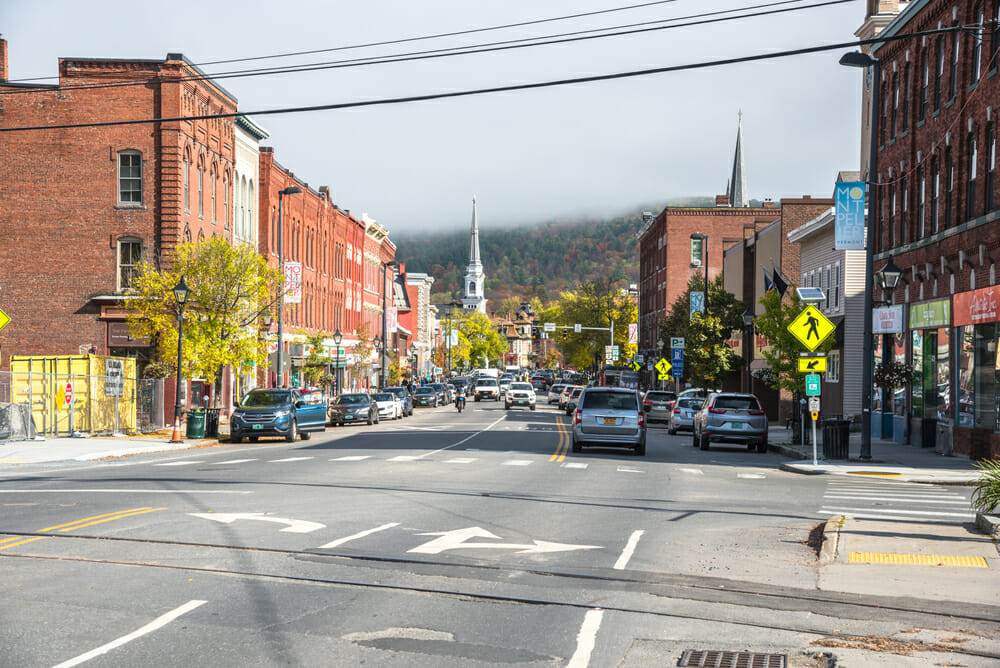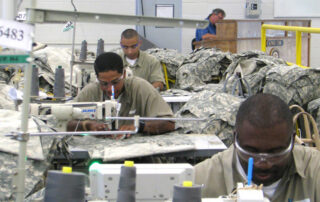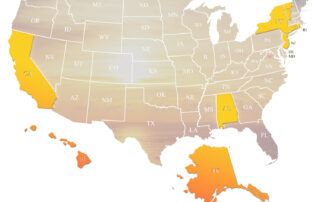
Criminal Justice and Rehabilitation in Vermont
The geographic size, cultural attitudes, political inclinations, GDP, poverty rate, and other factors influence a state’s crime rate, the criminal justice system, and its rehabilitation approach. This article examines Vermont’s approach to crime, incarceration, and reform.
Prison Population Data in Vermont
Analyzing a state’s prison population and the percentage of those behind bars is the first indicator of how that state approaches crime and criminal justice. Beyond that, when analyzing criminal justice in Vermont, one should ask questions like:
- What criminal rehabilitation programs are used in Vermont?
- Are there alternatives to incarceration in Vermont?
- How many people are incarcerated in Vermont?
- What are the biggest prisons in Vermont?
- What is Vermont’s recidivism rate?
- What is Vermont’s crime rate?
According to the Bureau of Justice Statistics, Vermont ranks 47th for its incarceration rate. Only Rhode Island, Maine, and Massachusetts have lower incarceration rates than Vermont. The Green Mountain State incarcerates about 134 residents for every 100,000 living there. The overall incarceration rate in the U.S. is about 350 per 100,000, almost three times the Vermont rate.1
How many people are incarcerated in Vermont? According to the National Institute of Corrections, Vermont has a “unified system,” meaning an integrated state-level prison and jail system. Six states have unified systems: Alaska, Connecticut, Delaware, Hawaii, Rhode Island, and Vermont. This differs from other states that utilize separate jail and prison systems.2

Image courtesy of doc.vermont.gov
In its unified system, Vermont has eight incarceration facilities with a combined population of 1,608 prisoners. One thousand twenty-six staff positions operate the Vermont Department of Corrections, working from an annual budget of $156,957,720. The state also has a community corrections population with 3,987 under probation and 871 under parole. Comparatively, Vermont spends very little on incarceration. The state spends about $200 per capita on incarceration, the seventh costliest item on the state’s budget. The highest-cost item, K–12 education, receives funding to the tune of almost $4,000 per capita.3
What about private prisons in Vermont? As of 2019, 268 Vermont prisoners, or 16% of the state’s criminal population, were incarcerated in private prisons. However, the largest prison in Vermont is a state-run institution, the Northern State Correctional Facility, which can hold up to 433 inmates.4
Crime Rates in Vermont
The best way to understand the scope of crime and criminal justice in a state is to study the year-to-year crime rate for that state. Vermont recorded the following crimes in 2016, the most recent year that data is available:5
- 14 homicides
- 136 forcible rapes
- 104 robberies
- 553 aggravated assaults
- 1,912 burglaries (breaking and entering)
- 7,717 thefts (larceny)
- 180 motor vehicle thefts
- 44 cases of arson
Crime rates vary from year to year, but the reported data for 2016 presents a fairly reliable picture of what annual crime looks like in the state of Vermont.
Recidivism Rates in Vermont
Recidivism is a critical factor to consider because recidivism is the rate at which people released from incarceration re-offend and return to incarceration. According to the state’s reporting, the recidivism rate in Vermont is about 16%, one of the lowest in the nation. That means that even though Vermont spends very little on criminal justice compared to other states, the Green Mountain State has been directing its resources toward evidence-based criminal rehabilitation modalities that work.6
Criminal Reform and Alternatives to Incarceration in Vermont

Photo by Albert Pego/Shutterstock.com
While Vermont has, in some ways, led the charge in creating effective criminal rehabilitation and alternatives to incarceration, there is room for improvement and more effective programs. Three areas where Vermont should implement more programs include:
- Substance abuse programs for offenders who are addicted to drugs and alcohol
- Work training/vocational programming to help offenders learn employable skills for post-incarceration life
- Life skills programs and coping strategies/courses to help offenders live crime-free lives following their release
As the above three approaches are implemented within Vermont prisons, alternatives to incarceration should also be offered. Particularly for nonviolent offenders and people who are arrested for possession-only drug offenses, Vermont offenders should have access to alternatives like:
- Probation
- Community service
- Work release programs
- Substance abuse programs
- Educational programs and courses
Perhaps most importantly, policymakers should implement educational programs inside prisons in Vermont. Such programs help offenders find the underlying reasons why they committed a crime in the first place while simultaneously empowering them with the tools they need to live crime-free, productive, and responsible lives.
Sources:
- BJS. “Prisoners in 2020 – Statistical Tables.” Bureau of Justice Statistics, 2020. bjs.ojp.gov
- NIC. “Vermont 2019.” National Institute of Corrections, 2019. nicic.gov
- Urban. “Project Vermont.” Urban Institute, 2023. urban.org
- VDOC. “Northern State Correctional Facility (NSCF) – Newport.” Vermont Department of Corrections, 2023. doc.vermont.gov
- VCIC. “Statewide Crime Index.” Vermont Crime Information Center, 2016. vcic.vermont.gov
- VTCRG. “Recidivism Study and Cost Analysis for Vermont Court Diversion.” Vermont Crime Research Group, 2019. legislature.vermont.gov
Related Articles
Criminal Justice Reform Extends Rights to Felons Who Have Served Their Sentences
For decades, voter enfranchisement or disenfranchisement for incarcerated and formerly incarcerated individuals has been debated. An estimated 4.6 million Americans are barred from voting due...
Read more >>
Four States Abolished Involuntary Servitude for Inmates in 2022. Here’s How They Did It
In the November 2022 midterm elections, the subject of involuntary servitude and slavery was on the ballot in four states. Often referred to as “prison...
Read more >>
Nine States Have Reduced Their Prisoner Population by 30%. What Do They Have in Common?
For the first time in decades, several U.S. states are making a concerted effort to reduce their prison populations by applying a range of policy...
Read more >>
What Is the Scope of Private Prisons in the U.S.?
In 2001, the Federal Bureau of Justice Assistance authored a report analyzing then-emergent issues regarding private prisons in the United States. According to the authors...
Read more >>





